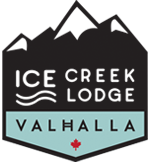Safety and Risk
In order to help you be aware of the level of risk associated with the specific backcountry activity you are participating in, we encourage you to review the “Assumption or Risks” portion on the Winter Waiver and Summer Waiver. This will allow you to be prepared, have peace of mind and make your trip as memorable as possible. Understanding risk is vital for recreating responsibly in BC’s Backcountry. Backcountry adventures in BC can include activities that at times may have a higher-than-normal element of risk. Once you venture into the backcountry you are entering an uncontrolled environment. BLBCA member lodges do their utmost to allow you to enjoy an exhilarating yet safe experience. Guided trips are led by highly-trained, professionally-certified members of the Association of Canadian Mountain Guides. Safety always comes first, BLBCA member organizations strive to ensure it is a key component of any backcountry experience.
Avalanche Transceivers
All winter tours focus on backcountry safety. Having knowledge prior to your trip optimizes the experience at Ice Creek Lodge. Avalanche transceivers (or avalanche beacons) are devices that send out a radio signal. Each person in your group needs to wear their own transceiver. If an avalanche happens and someone is buried, everyone else in the group will switch their transceiver to search mode. Using the signal, you can find the person under the snow.
Avalanche Probe
Once you’ve homed in on the signal, it’s time to probe. An avalanche probe is used to pinpoint the victim’s exact location. This gives your group a target for the next step. Probes are made of aluminum or carbon fiber and look like collapsible tent poles. Most poles extend to 240–300cm; if you spend time in places with a deep snowpack, there are also 320cm probes. Probes also have other uses, such as testing crevasse bridges and cornices and checking snowpack depth (a 320cm probe is useful for this). Always check that your probe is in good working order.
Avalanche Shovel
Finding the location of a victim is critical, but effective digging is where you’re really going to save time. In the seconds after an avalanche, even fresh powder will solidify so densely that you can’t even push your hand into it. A tough avalanche snow shovel is a must. Some tips for choosing a backcountry shovel:
- Look for a tough metal blade so it won’t break in snow that can feel hard as a rock. No plastic shovels.
- Make sure it fits into your backpack.
- Some models have telescoping handles that extend to give you better leverage when you’re digging.
Everybody in your group must have one.
Get To Know Your Gear
Most of today’s transceivers are pretty innate to operate, it’s important to practice using them on a regular basis. Practice your transceiver. Get to know your device. Find a group of backcountry users in your area, spend an afternoon outside, in your yard, or at the ski hill and go through your own scenarios. Get your shovel and probe out. Learn effective digging skills.
Practice Scenario
Upon arriving at Ice Creek Lodge, the group will go through an avalanche scenario. This exercise is extremely important and a great time to practice working as a team. Your guides will curate the scene and provide you with constructive feedback, so as to encourage knowledge and confidence in your transceiver use.
